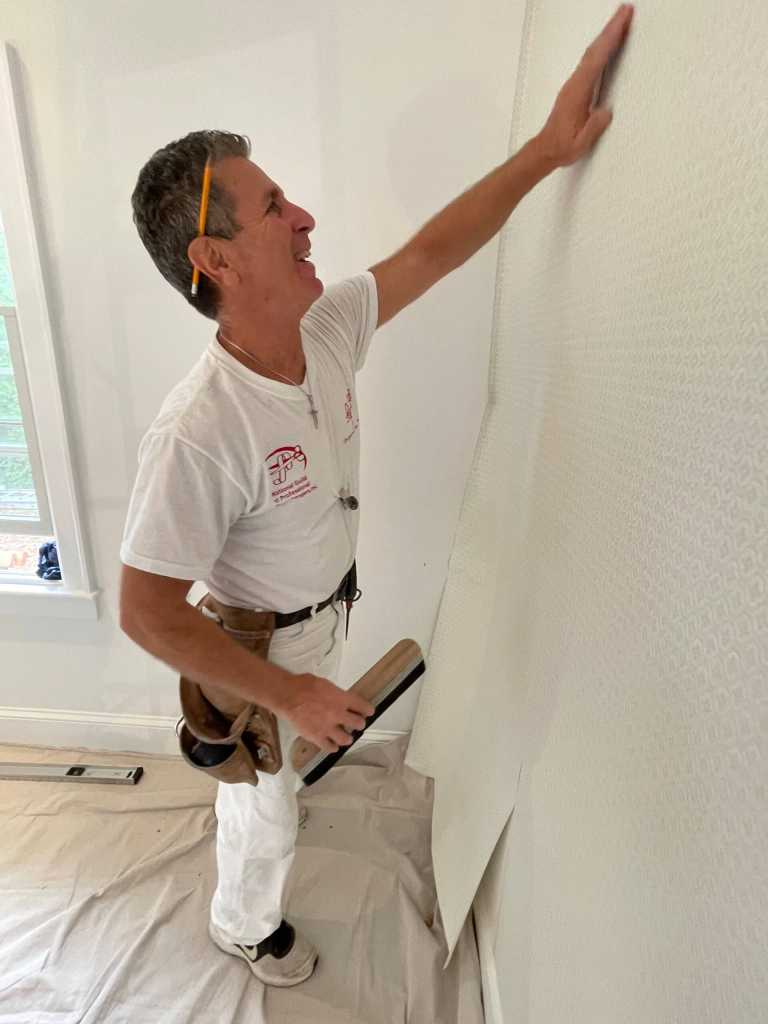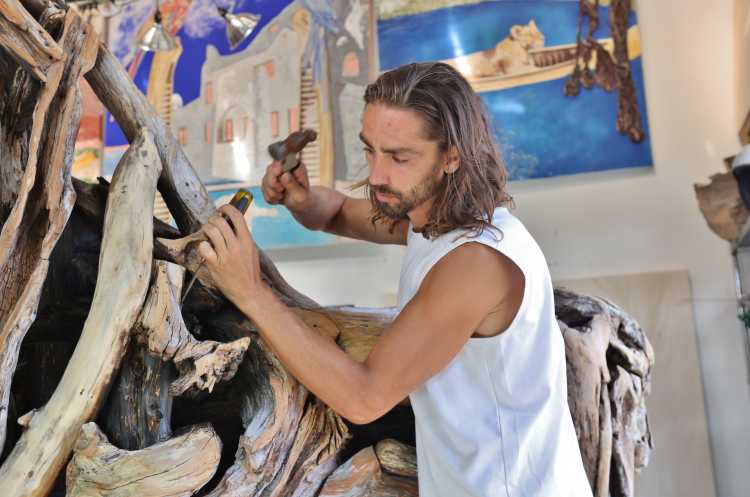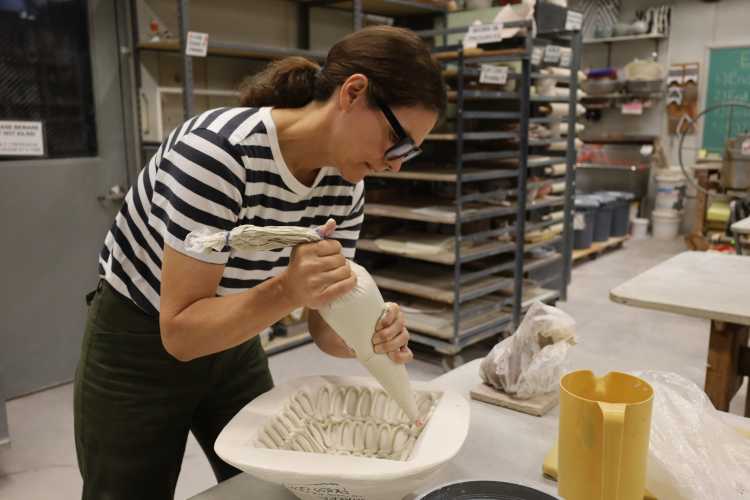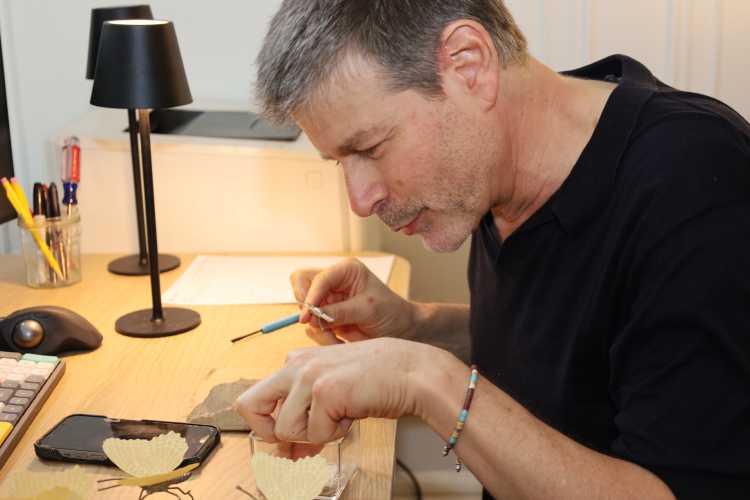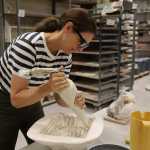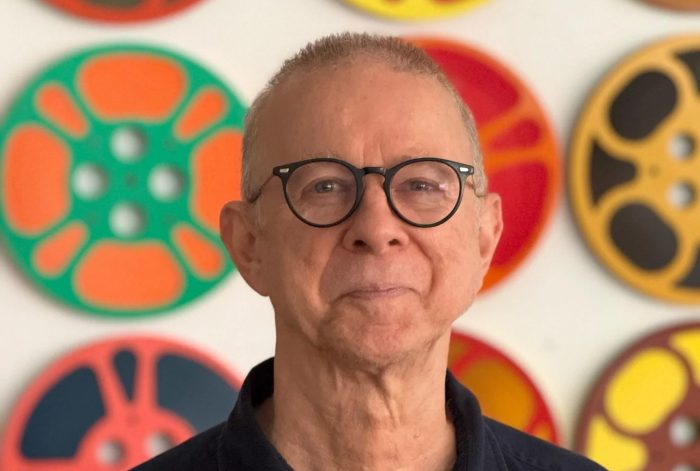Wallpaper has come a long way in the 46 years that Jeffrey DiFilippo has been working as a paperhanger.
It’s not just a floral pattern in your grandmother’s bathroom. Wall coverings come in an array of textiles, from fuzzy velvets to leather, from linen and silk fabrics to marbled and mylar paper. Elizabeth Dow makes a birch-bark wall covering that could make you feel like you’re in a forest. DiFilippo has worked with a mother-of-pearl seashell luxury wallcovering and has even hung pheasant feathers laminated on paper.
“There’s been a lot of growth in this industry where, if you can dream it up, they put it on wallpaper and I install it,” says DiFilippo.
Wallpaper hanging is a finishing trade that is a bit of an exacting art form. Attention to detail and being clean and orderly are key. One false move can throw off the entire end-product.
“What you need to have is patience,” he explains. “You need to be good with your hands. It’s very artistic — cutting around intricate moldings, having an eye for the pattern, what’s going to look good where.”
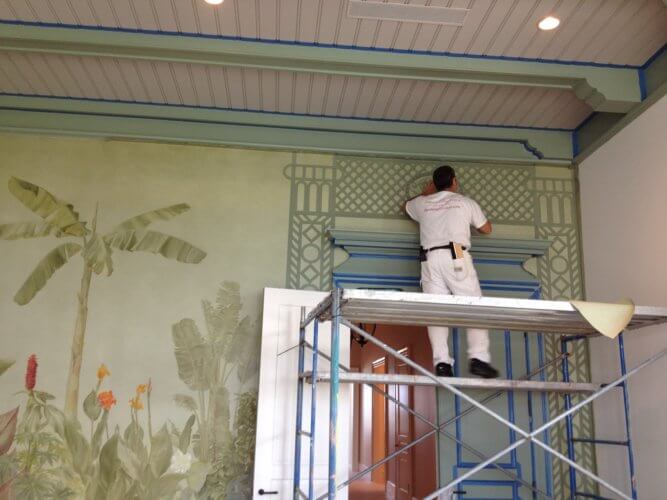
DiFilippo began his career in New York City, but with a home in Bridgehampton for the last 20 years he has also gained a steady following of high-end clientele on the East End. He still has a place in Brooklyn and a recent move to Moriches has allowed him to continue working throughout Long Island, New York City and Greenwich, Connecticut.
The job has even taken him overseas for customers who trust his work. He’s hung paper on the private island of Mustique in the Caribbean and clients have flown him to Paris, Provence, London and even Saudi Arabia.
“There are no boundaries to where we’ll work,” DiFilippo says.
Nowadays, he has 10 people working under him, all of whom he trained himself. For the last 20 years, he has been doing business as J.D. Paperhanging Corp.
DiFilippo works closely with several decorators and has gained a reputation for being able to do difficult jobs.

He says he feels lucky to have carved out this niche career for himself, since it was something he kind of happened into. Hanging wallpaper never entered his mind when he was thinking about a career. DiFilippo had hopes of being an engineer, but admits he didn’t want to take all the required courses so he stopped attending college. His mother, an interior decorator for a half-century, suggested he attend the now defunct United States School of Professional Paperhanging in Rutland, Vermont, as she knew the man who ran the school.
He took a three-month course, hanging wallpaper every day in mock kitchens and bathrooms and on staircases. After graduation, he went on to work as an apprentice.
“Back in 1976, when I started, I worked with one of the top wallpaper installers in New York City — all higher-end work. That’s how I learned my trade and it was a labor of love, and it was very good to me.”
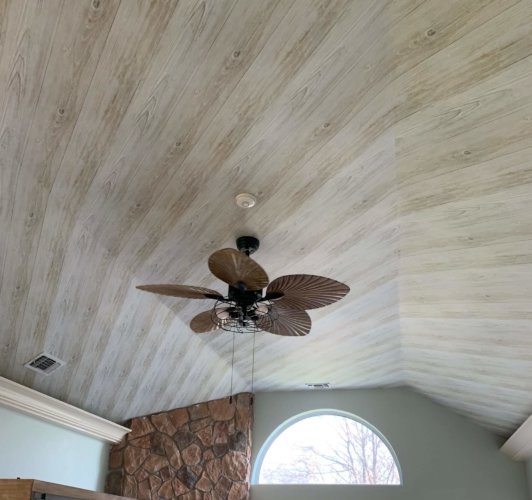
Over the course of his career, the industry has been “completely revamped,” he says. “It’s almost like putting a piece of artwork on the walls sometimes,” DiFilippo adds, describing the materials. “Decorative instincts” are a must. “I guess I got that from my mom.”
Different materials require different installation techniques and installers must be able to adapt, he says.
“A lot of people who are making these products don’t know how it’s going to react in an open environment,” he continues. “A lot of times, you’re working on the fly.”
Even the term wallpaper has become too general, DiFilippo says. “It’s more like ‘wall covering,’” because there are so many different materials being used — “You’re doing a lot of intricate materials that are very meticulous.”
Like any trend, some materials he worked with when he started are making a comeback. Grasscloth wallpaper, woven strands of natural fibers adhered to thin rice paper, is one example. “That was big when I started in the late ‘70s, now in the 2000s there are certain companies that make it exclusively.”
It’s also a material where it is important to have the right installer. “If it doesn’t match up, you see every panel,” he says.
Gracie, which makes hand-painted wallpaper, offers custom artwork design. Exact measurements are taken to ensure the panels are seamless — if the right installer does the work.
DiFilippo loves a challenge, though.
“I like to take on jobs that others won’t,” he says. “I like to be creative. I’ve had decorators wrap everything that didn’t move in wallpaper. You have to be very creative to get that finished look. In the end it’s so satisfying.”
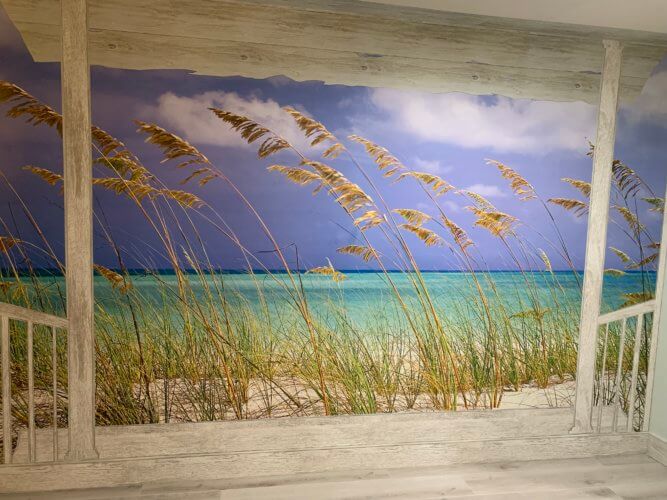
One difficult job he recalls was with a glass bead wallpaper. “Picture little ball bearings made out of glass and then glued to paper. Picture how heavy that would be. I had to hang that on a ceiling once — a sheet 4.5 feet wide by 14 feet long. I had to figure out how to do it.”
Just how did he manage? He made a template with another easier covering and used a PVC bar with right angles to install it. “It was pretty crazy,” he says. “No one is going to tell you how to do that on a ceiling. It’s almost impossible.”
Decorators appreciate that he makes their ideas work, he says. “You dream it up, I can do it.”
In his home, DiFilippo has also gotten creative. He prefers the coverings that really stand out and when he moved to Moriches he put up a wall covering that looked like distressed wood in texture and color. He put the same covering on the vaulted ceilings at 45-degree angles. He and his wife were going for a beachy vibe so he even created a three-dimensional mural. He bought a coastal mural that shows beach grass with emerald blue water and a blue sky and overlaid it with the wood wall covering to create the illusion of columns holding up the roof. It makes it seem as if the scene is happening beyond his porch.
“It’s just something I love,” DiFilippo says of the installation process, and while he has assistants, he enjoys putting on his whites and getting to work. “I love when I just put on a radio and just install.”
Asked if paper hanging is hard on the body, he explains that it’s not as taxing as one might think, though at 64 DiFilippo says he’s fortunate not to have any joint problems.
“It’s more like meditative. Picture it — you’re in beautiful surroundings. . . at some of them I’m overlooking the ocean. I don’t even stop to eat.”
This article appeared in the December 2021 issue of Behind The Hedges. Click here to view the digital edition.

